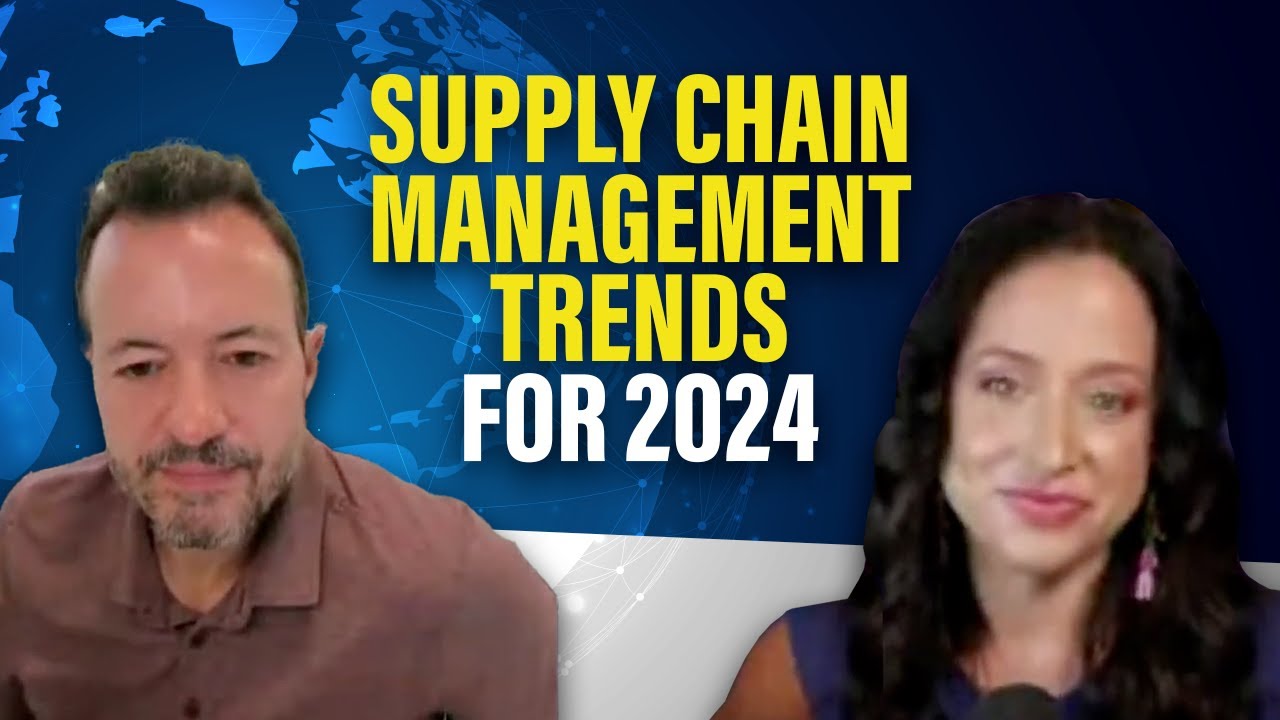5 Inventory Management Metrics Every Supply Chain Professional Must Master
Summary
TLDR在这段视频中,Scott Luton与供应链专家Marcia Williams进行了一次深入的对话,探讨了供应链专业人士必须掌握的五个库存管理指标。首先,他们讨论了库存供应天数,这是衡量库存能够覆盖销售天数的重要指标。接着,他们分析了库存周转率,以了解库存的流动性。第三个指标是现金转换周期,它显示了从公司对库存的投资到从库存中获得现金所需的天数。第四个指标是过时率或库存过时百分比,这对于避免库存过时和损失至关重要。最后,他们讨论了库存准确性,这是确保物理库存与系统记录一致的关键。Marcia Williams强调了持续监控和调整这些指标的重要性,以适应不断变化的业务环境和市场条件。
Takeaways
- 📈 **库存周转率**:衡量库存流动速度的指标,高周转率意味着库存流动快,可以通过销售商品更快地回收现金。
- 🔢 **库存准确度**:通过物理盘点与系统记录对比,确保库存数量的准确性,对运营和财务都至关重要。
- 💡 **库存天数**:显示库存能够覆盖销售的天数,帮助企业确保有足够的库存以实现利润。
- 🔄 **现金转换周期**:衡量从公司对库存的投资到从库存中获得现金的天数,周期越短对企业越有利。
- 📦 **库存过时率**:衡量库存因时间过长或市场变化而变得过时的比率,需要保持尽可能低。
- 📚 **财务报表的重要性**:通过利润和损失表(P&L)获取销售成本,通过资产负债表获取平均库存信息,以进行库存管理的计算。
- 🛠️ **操作效率**:使用库存管理指标来提高操作效率,减少不必要的步骤和浪费。
- 📏 **度量基准**:建立库存管理的基准,然后根据业务变化调整目标和标准。
- 📈 **行业差异**:认识到不同行业和企业策略对库存管理指标的影响,以及如何根据具体情况调整这些指标。
- 📆 **时间敏感性**:意识到市场和业务环境随时间变化,库存管理的目标和标准也需要相应更新。
- 👤 **个人联系**:鼓励观众与演讲者建立联系,通过LinkedIn和专业网站获取更多信息和最佳实践。
Q & A
库存管理的五个关键指标是什么?
-库存管理的五个关键指标包括库存供应天数、库存周转率、现金转换周期、过时率或百分比过时以及库存准确性。
库存供应天数是如何计算的?
-库存供应天数是通过将库存单位数除以每天销售的单位数来计算的。
为什么库存周转率对于供应链专业人士来说很重要?
-库存周转率显示库存的流动速度,帮助企业了解库存是否过快或过慢地移动,从而避免长时间占用现金。
现金转换周期是什么,它对企业有什么影响?
-现金转换周期衡量的是从公司对库存的投资到从库存中获得现金的天数。一个较短的现金转换周期通常对企业更有利,因为它可以更快地回收投资。
过时率或百分比过时在库存管理中扮演什么角色?
-过时率或百分比过时衡量的是库存因时间过长或未正确管理而导致的过时或废弃的比率,这对于避免库存积压和资金浪费至关重要。
库存准确性指标为什么重要?
-库存准确性确保系统中记录的库存数量与实际物理库存相匹配,这对于信任库存系统和进行准确的库存管理至关重要。
Marcia Williams在供应链管理方面有哪些专业背景?
-Marcia Williams拥有18年的供应链管理经验,专长于优化供应链财务规划,以提高盈利能力和改善现金流。她持有密歇根州立大学的MBA学位,是福布斯理事会的撰稿人,出版过书籍,并且是TEDx演讲者。
为什么供应链专业人士需要不断调整他们的库存管理策略?
-供应链专业人士需要不断调整他们的库存管理策略,因为市场条件、产品生命周期和公司目标的变化都可能影响最优库存水平。此外,技术进步和消费者行为的变化也需要专业人士持续更新他们的策略。
如何使用财务报表来计算库存管理指标?
-可以通过利润与损失表(P&L)获取销售成本(COGS),而平均库存则通常在资产负债表上找到。通过这些财务报表中的数据,可以计算库存周转率和现金转换周期等指标。
为什么库存管理对于企业来说至关重要?
-库存管理对于企业至关重要,因为它直接关系到企业的资金流动性、盈利能力和运营效率。有效的库存管理可以减少资金在库存中的占用,加快资金回流,同时避免过剩或短缺,从而提高企业的竞争力。
如何通过改进库存管理来提高企业的运营效率?
-通过改进库存管理,企业可以减少不必要的库存积压,加快库存周转,提高资金流动性。此外,准确的库存记录和预测可以帮助企业更好地响应市场需求,减少缺货或过剩的风险。
供应链专业人士如何保持对库存管理指标的持续关注?
-供应链专业人士需要定期审查和分析库存管理指标,确保它们与当前市场状况和企业目标保持一致。此外,他们应该利用技术工具来监控库存水平,自动化库存管理流程,并及时响应市场变化。
Outlines

This section is available to paid users only. Please upgrade to access this part.
Upgrade NowMindmap

This section is available to paid users only. Please upgrade to access this part.
Upgrade NowKeywords

This section is available to paid users only. Please upgrade to access this part.
Upgrade NowHighlights

This section is available to paid users only. Please upgrade to access this part.
Upgrade NowTranscripts

This section is available to paid users only. Please upgrade to access this part.
Upgrade NowBrowse More Related Video

Supply Chain Management Trends for 2024 and Beyond

Five Megatrends Influencing Supply Chain Risk And Resilience with Bindiya Vakil

The Critical Role of Supply Chains in Business and Society

ASCM's Top Trends in Supply Chain for 2024

The Increasing Pressure to Ensure Ethical Supply Management

Data Analytics in Supply Chain Management Canada🍁 Tools to use🎒 Pay Range🚛Roles & Titles & Companies
5.0 / 5 (0 votes)
